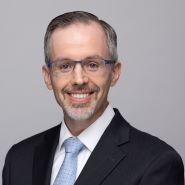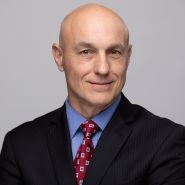Plumber and Electrician recitations render claims indefinite (Ex parte McAward)
- September 5, 2017
- Article
In its precedential decision, Ex parte McAward (August 2017), the United States Patent Trial and Appeal Board (PTAB) recently reaffirmed that the threshold for indefiniteness of claims is lower during examination than during litigation. Specifically, the PTAB reaffirmed the Office’s approach to indefiniteness, in that “if a claim is amenable to two or more plausible claim constructions [during examination], the USPTO is justified in requiring the applicant to more precisely define the metes and bounds of the claimed invention by holding the claim unpatentable … as indefinite.” Ex parte McAward, pp. 5-6, quoting from Ex parte Miyazaki (BPAI 2008, precedential). The PTAB also acknowledged the higher threshold for indefiniteness applied during litigation, for which the Supreme Court held that a patent claim must “inform those skilled in the art about the scope of the invention with reasonable certainty.” Nautilus v. Biosig, 134 S. Ct. 2120, 2129 (2014).
The Office also uses a different standard for claim interpretation during prosecution, as compared to claim interpretation during litigation. During examination, examiners give claim terms their broadest reasonable interpretation (“BRI”) in light of the specification. During litigation, the judge generally gives claim terms their “ordinary and customary meaning” as would be understood by a person of ordinary skill in the art, according to the standard outlined in Phillips v. AWH Corp. (Fed. Cir. 2005). Generally, BRI is broader than a claim interpretation under Phillips. An earlier article addressed this topic here: https://www.oblon.com/philippe-j-c-signore-ph-d/publications/claim-interpretation-a-source-of-unhappiness-for-u-s-patent-applicants-and-patentees/.
The rationale given for the difference in standards on indefiniteness is the same as the one given for the difference in standards on claim interpretation: examination is an interactive process in which the applicant has the opportunity to amend the claims in order to address ambiguities in the claims. See In re Packard (Fed. Cir. 2014). By contrast, during litigation, the claims are fixed and serve their public notice function.
Whether such differences in standards are justified is debatable. The Supreme Court has agreed that there is “a degree of inconsistency in the standards used between the courts and the agency” in the context of claim interpretation. See Cuozzo Speed v. Lee (2016). However, whether it would agree to such inconsistencies for interpreting and applying a statute, such as 35 USC §112(b), which commands definiteness, is another story.
In any event, the consequence of the ex parte McAward decision for applicants is simple: broadest reasonable interpretation + lower standard for indefiniteness = more rejections by the USPTO. Thus, applicants not interested in clarifying claims early (via revisions, preliminary amendments and/or responses to first office actions) are likely to face more rejections, more RCEs, and increased costs, delays, and frustration.
Another interesting point from the ex parte McAward decision comes from the specific claim language at issue. The claim recited “wherein the water detector is configured to be reliably installed by an untrained installer or a homeowner and to not require the services of a plumber or electrician to perform installation, thereby permitting widespread and cost effective adoption.” Are you kidding? We didn’t need a PTAB precedential decision to tell us that such vague language rendered a claim indefinite. As explained by the PTAB:
This claim language is unusual because, rather than further defining the water detector's structure, including by reference to a function that the water detector is capable of performing, the claim language attempts to further define the water detector's structure by the skill level required to install the water detector. This language fails to provide adequate clarity to the required structure because the skill level of "an untrained installer or a homeowner" is ambiguous and vague, and thus, the meaning of a structure configured to be "reliably installed" by such an installer is unclear.
And, as stated by the Examiner in his answer:
This limitation is unclear and indefinite since the claim language does not provide any structure to the apparatus or system that would allow it to be "configured" to function as described in the claims; as such one having ordinary skill in the art cannot determine the metes and bounds of the claimed subject matter. Furthermore the limitations of "to not require the services of a plumber or electrician" can be contradicting to the limitation of "an untrained installer or a homeowner" since an untrained installer or a homeowner that is working on plumbing or electrical circuits can be interpreted as being "a plumber" or "an electrician" regardless of their level of skill.
If it was not already followed, the practice tip for applicants here is to avoid defining an invention by reciting in the claim an ambiguous and vague skill level required to make or use the invention.
The decision can be read here: https://www.uspto.gov/sites/default/files/documents / Ex%20parte%20McAward%202017_08_25.pdf
Recent Publications
5 IP Rules to Know to Protect Your Business in the United States (article in French)
Coaching INPI Newsletter










 Counseling & Strategic Advice
Counseling & Strategic Advice IP Transactions
IP Transactions Litigation
Litigation PTAB Proceedings
PTAB Proceedings Start-Up
Start-Up Technology Transfer
Technology Transfer Trademark & Designs
Trademark & Designs U.S. Patent Procurement (Application Drafting & Prosecution)
U.S. Patent Procurement (Application Drafting & Prosecution)









